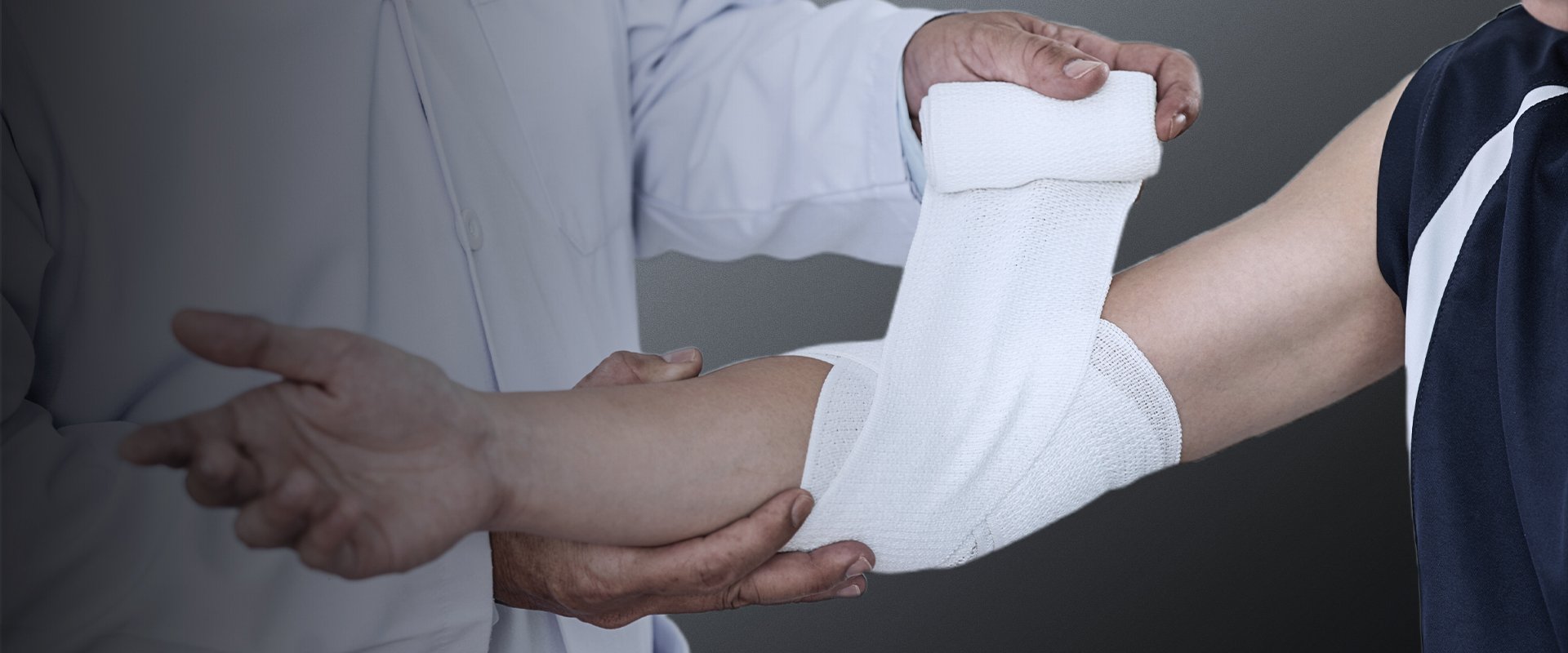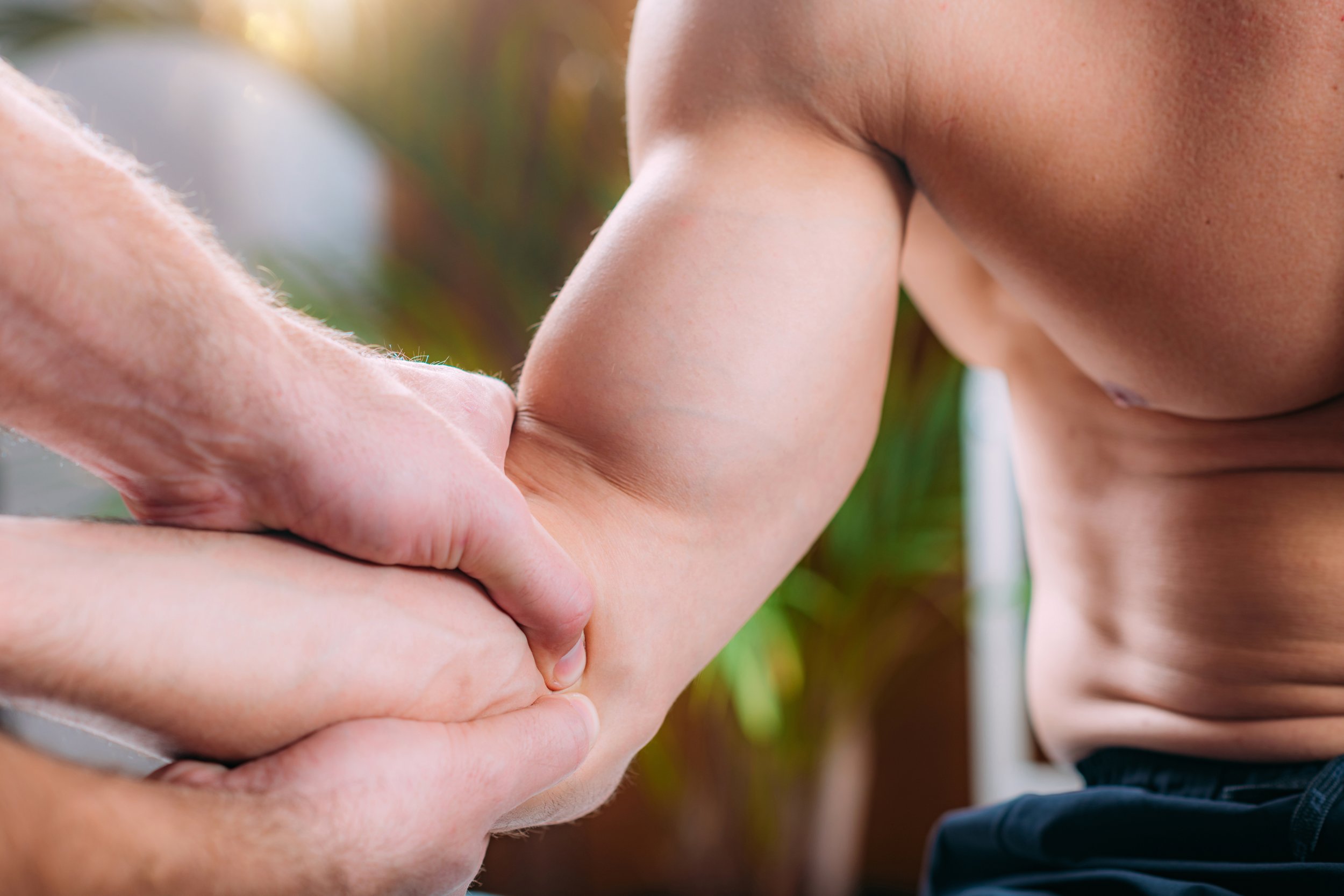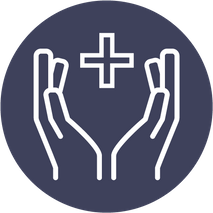
Physical Therapy for Elbow Bursitis
AT EVOLVE
Physical Therapy for Elbow Bursitis
HOW CAN PHYSICAL THERAPY ADDRESS BURSITIS OF THE ELBOW?
Pain and swelling at the back of the elbow could be a condition known as olecranon bursitis. The olecranon is the most prominent bony feature of the elbow. Bursitis refers to irritation or inflammation of the fluid-filled sacs overlying that joint. While often painful, physical therapy can be helpful in managing the causes and symptoms of bursitis via the application of pain and inflammation-reducing modalities and techniques such as manual therapy and therapeutic exercise.
WHAT DOES PHYSICAL THERAPY TREATMENT FOR ELBOW BURSITIS LOOK LIKE?
Physical therapy treatment of elbow bursitis is two-pronged. First, we aim to reduce symptoms of pain and discomfort. Second, look to identify the underlying causes of your elbow bursitis so that we can reduce the likelihood of recurrence in the future. My team of therapists and I will start by getting to know your concerns and goals and performing a thorough physical examination of the elbow to determine what areas we should target with our physical therapy interventions. Your therapist may use modalities to lessen pain and inflammation and employ manual therapy interventions to target joint and tissue mobility while also prescribing movements and exercises for strength, motor control and mobility of the arm to be performed in the home and the clinic.
WHEN WILL I BEGIN TO SEE RESULTS?
The duration of your physical therapy plan of care is based on many different factors including the severity of your symptoms and the number and type of underlying factors your therapy is addressing. While full resolution of symptoms can take time, you may begin to see some results right away. You should experience improvements in many symptoms such as pain, stiffness, and inflammation within a couple of weeks but making meaningful changes in strength, flexibility and overall mobility in order to provide long-term relief may take longer. Achieving long-lasting results may take some time, but dedication to your program will not only help you achieve these results but will help to decrease the likelihood of symptoms recurring in the future.
UNDERSTANDING ELBOW BURSITIS
Bursitis is a condition affecting the bursae near a joint. A bursa is a small, fluid-filled sac found near a joint. These slippery sacs help the tendons, ligaments, muscles and skin glide smoothly over the bony surfaces of the joints. Though they contain only a small amount of fluid, they also provide cushioning to the area. These bursae play such an important role that there are actually more than 150 of them in the body.
The elbow joint connects the forearm to the upper arm. The forearm consists of the radius and ulna bones while the upper arm consists of the humerus. The elbow joint is the articulation between the larger forearm bone, the ulna, and the humerus as well as between the end of the radius and the humerus. These bones form a hinge joint that allows for flexion and extension of the elbow.
The elbow joint is encapsulated by a fibrous joint capsule. Within that joint capsule is the articulation between the ulna and humerus as well as that between the radius and ulna which allows you to turn your palm up and down (supination and pronation). Though they exist within the same joint capsule, most anatomists consider these two separate joints. Various muscles, tendons, nerves and ligaments are also present at the elbow.
Most commonly, elbow bursitis involves the olecranon bursa–hence why the formal name for elbow bursitis is olecranon bursitis. The bony prominence that most refer to as their elbow is the olecranon process. Between the bone and the skin lies the olecranon bursa. Though you have bursa throughout your body, the olecranon bursa is one more commonly affected by bursitis.
Acute or repetitive trauma leading to inflammation is typically the cause of olecranon bursitis. In some cases though, an infection in the bursa can be the cause. Anyone can be affected by olecranon bursitis but men between 30 and 60 years of age are at the highest risk. Falling onto your elbow on a hard surface is an example of an acute cause of olecranon bursitis while constantly resting your elbow on a hard surface is an example of repetitive trauma that can eventually cause irritation, inflammation or damage to the bursa.
SYMPTOMS OF ELBOW BURSITIS
- Focal swelling over the bony prominence of the elbow
- Chronic or recurrent, painless swelling over the elbow
- Pain with pressure over the swollen elbow such as leaning onto a hard surface
- Tendency to bump the swollen elbow
- Pain, warmth, redness and swelling over the inflamed bursa with or without fever can indicate septic bursitis (bursitis caused by infection)
End Injury Progression
Physical therapy for a elbow bursitis has proven to prevent injury, slow and even stop pain issues, improve performance, and reverse injury progression in many cases.
Relieve Pain
The movements used in this technique can target your entire body helping you to manage discomfort and pain during the course of your physical therapy treatments.
Improve Range of Motion
Posture awareness is an important area to focus on due to the fact that certain positions may cause you further discomfort and pain.
Restore Mobility
You can regain mobility and flexibility by taking part in the stretches and exercises as prescribed by your physical therapist.
How Long Will Physical Therapy for Elbow Bursitis Last?
If you decide to work with a physical therapist to help correct your elbow bursitis issues, your entire treatment plan could consist of around 8-20+ different physical therapy sessions that will each last 60-90 minutes. Once you complete your customized physical therapy treatment plan, you will be able to continue to do the prescribed stretches and exercises utilized during your PT sessions yet in the comfort of your own home.
PHYSICAL THERAPY TO ADDRESS BURSITIS
While many individuals with olecranon bursitis will not require any physical therapy, when needed, physical therapists can help you recover and educate you on ways to prevent recurrence.
In the first couple days of an acute episode of bursitis, your physical therapist will counsel you on how to minimize irritation and reduce inflammation in the area. Resting, avoiding painful movements and applying ice for 15-20 minutes every couple of hours can help. If pain and inflammation are severe, your doctor may recommend an anti-inflammatory medication or possibly a steroid injection into the area to reduce the inflammation. In some cases, aspiration of the extra fluid or even surgery to remove the bursa may be needed.
As the pain and inflammation subside, your physical therapist can take the following steps to help you recover:
- Modify your activities to decrease irritation on the bursa
- Teach you stretching and mobility exercises to restore full range of motion in the elbow joint. This allows you to use the elbow functionally and allows the muscles around it to perform optimally
- Apply manual therapy techniques to the elbow and soft tissue to improve joint alignment and movement to reduce irritation on the bursae
- Strengthen the muscles around the joint to avoid excessive stress on the bursa and help you return to activities without pain
- Observe how you perform the activities and movements that may have caused the bursitis and advise you on how to optimize or modify these movements to prevent a future episode of bursitis
- Help you slowly return to the activities that led to the development of bursitis now that you have improved strength, flexibility and movement coordination and optimized your movement patterns.
Mill Basin (located in Harbor Fitness)
6161 Strickland Ave
Brooklyn, NY 11234
Monday: 7am-8pm
Tuesday: 7am-8pm
Wednesday: 8am-5pm
Thursday: 7am-8pm
Friday: 8am-1pm
Park Slope (located in Harbor Fitness)
550 5th Ave.
Brooklyn, NY 11215
Monday: 9am-8pm
Tuesday: 8am-6pm
Wednesday: 9am-8pm
Thursday: 8am-6pm
Friday: 8am-3pm
Gravesend
372 Avenue U
Brooklyn, NY 11223
Monday-Thursday: 8am-8pm
Friday: 8am-3pm
Kings Highway
945 Kings Highway
Brooklyn, NY 11223
Monday-Wed.: 12pm-8pm
Ready to take the next step to a healthier you?
Contact Us Today!
PHYSICAL THERAPY FOR ELBOW BURSITIS
Need physical therapy for an elbow bursitis?
Let our caring and compassionate physical therapists help you with relieving pain while getting you back on your feet comfortably.
Call now to schedule your first PT consultation free of charge.
Call: 1-718-690-3229







